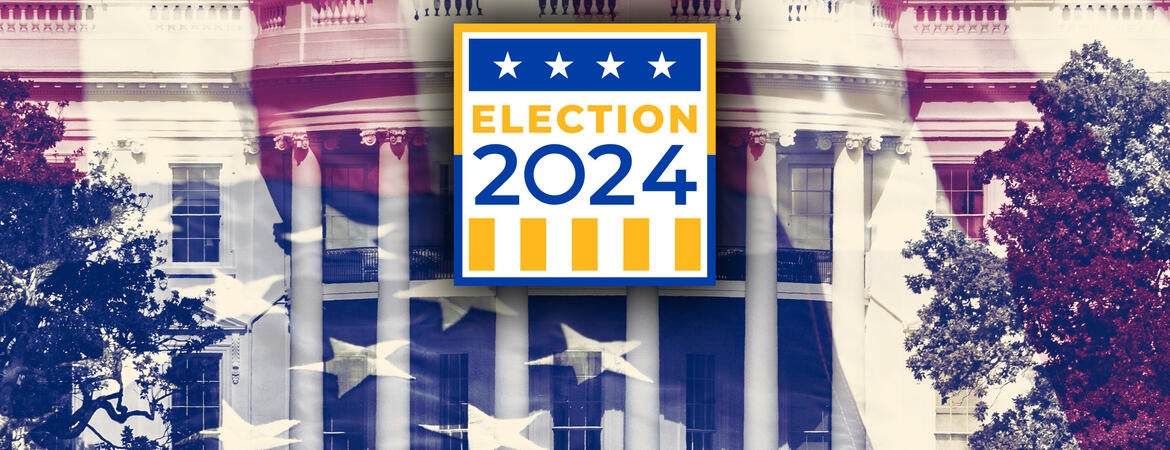
A polling surge following Kamala Harris's rise to the top of the Democratic ticket, and after the Democratic National Convention, has cooled, according to national presidential polls. Meanwhile, the "13 Keys" prognosticator has weighed in, predicting a Harris win. We asked UC Riverside polling and surveys expert Andy Crosby from the School of Public Policy what polls/predictions to believe — if any.
Q: American University Professor Allan Lichtman is known for his accurate predictions of U.S. presidential elections, having predicted every winner since 1984. He has claimed that polls are just "snapshots" that the media/experts misinterpret, and that polls should not be given too much significance. Instead, he argues, his "13 Keys to The White House" formula factors what really matters. What are your thoughts on that?
Crosby: Both Professor Lichtman's keys and polls can tell us valuable information about the election, and are two different methods of approaching the same problem. Professor Lichtman is correct that polls are indeed snapshots in time. To that end, polls become more accurate closer to elections because people do in fact change their minds for a variety of reasons (e.g., debate performances). It is worth noting that a number of Professor Lichtman's keys are also snapshots in time. For example, one of Lichtman's keys is the short-term economy during the campaign, which could of course change. Another of Professor Lichtman's keys is social unrest, which could of course occur at any time.
Professor Lichtman is also correct that polls can be misinterpreted (such as relying on national polls to predict the election outcome, as noted above). To that end, people who interpret polls should exercise caution. However, despite the challenges of polls, polls are still extremely valuable, and offer us information that is not available from Professor Lichtman's keys. For example, we use polls to predict primary elections, and Professor Lichtman's keys do not allow for this. Polls can also be conducted rapidly and can be tailored to deal with specific issues (such as public opinion on abortion). By contrast, some of the data used by Professor Lichtman are updated comparatively infrequently (such as economic data) and are more general. Again, in the end, both the keys and polls tell us valuable information, and there is room for both in political discourse.
Q: We tend to look for a “Holy Grail” of prognostication where presidential elections are concerned. For some it’s Lichtman’s “13 Keys.” For others, it’s Nate Silver (who is predicting a Trump win); on election day itself, many will be watching the New York Times needle. Is there a single poll/survey/prediction tool you’ll be watching closely as Election Day draws close?
Crosby: I will be watching the polls that are conducted closest to the election that use high-quality polling methods (including random sampling with transparent methodology), and I will be paying special attention to swing-state polls. Each poll represents a snapshot in time. Between the polls, events may happen (such as conventions and debate performances). We have already seen variations in polls over just the past few weeks, with the most recent New York Times/Siena College poll conducted Sept. 3-6 showing former President Trump slightly ahead once again (although within the poll's margin of error) after several polls previously showed Vice President Harris in the lead. As such, polls closer to the election are likely to be the most accurate.
Nate Silver's election forecast is also constructed based on polls, although it expands to include ratings of various pollsters (for example, the New York Times/Siena College is one of Silver's highest-rated pollsters with an A+ rating). Lichtman's keys also offer useful information, but I would caution that like polls, some of the keys may change between now and the election, and not all of the data used in the keys are updated as regularly as polls. With an election that has already been changing at a rapid pace (including replacing the Democratic candidate), timely data will be critical when it comes to accurately gauging the electorate.
Finally, the New York Times Needle is quite different from polls, Silver's forecast, and Lichtman's keys: it predicts the election in real time on election night based on actual votes. Although certainly interesting to watch, it is not available until election night. Essentially, the Needle is an alternative to watching election returns roll in on television news programs with narration and analysis by your favorite broadcasters (think the late Tim Russert with "Florida, Florida, Florida" in 2000). I will certainly be watching election returns on the day of the election, but until then, I will be watching high-quality polls in swing states.




